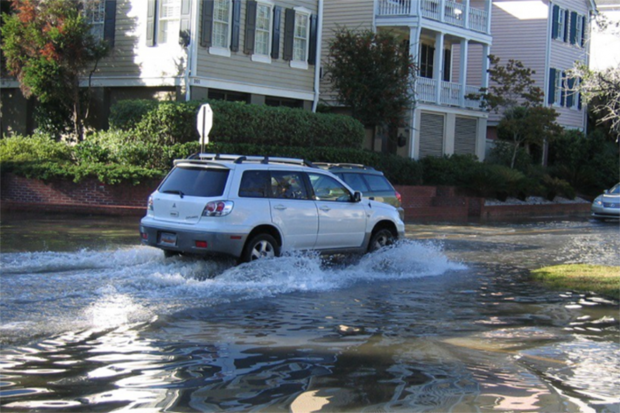Climate scientists predict rapid increase in high-tide flooding for majority of U.S. coastlines in the next decade
High tide, or nuisance, flooding can occur on sunny days without storms. Credit: NOAA
Multiple U.S. coastal regions may see rapid increases in the number of high-tide flooding days in the mid-2030s, according to a new study funded in part by CPO’s Modeling, Analysis, Predictions, and Projections (MAPP) program and co-authored by NOAA Satellites and NOAA's National Ocean Service. The combined effects of sea-level rise and natural fluctuations in tidal range are anticipated to cause tipping points in the frequency of high-tide flooding. These tipping points can produce acute impacts in underserved communities, who are often unprepared to deal with the consequences.
The study is led by the University of Hawaiʻi at Mānoa and published in Nature Climate Change.
Coastal locations around the U.S., particularly along the Atlantic coast, are experiencing recurrent flooding at high tide. The impact of high-tide flooding accumulates over numerous, seemingly minor occurrences, which can exceed the impact of rare extremes over time. These impacts are subtle—for example, the loss of revenue due to recurrent road and business closures—compared with the physical damage of property and infrastructure associated with extreme storm-driven events.
Read more at the link below.
